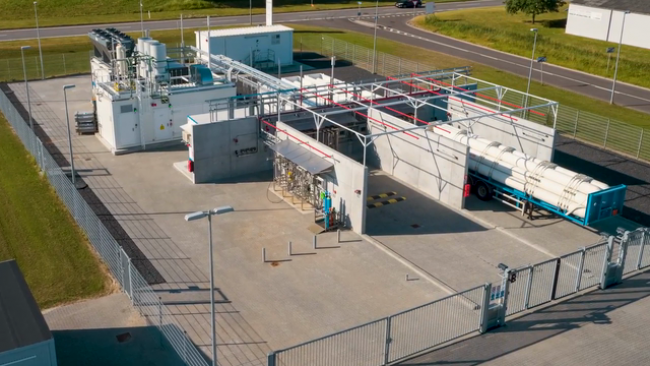Video Highlights Electrolyzers' Potential to Address World's Climate Challenges
Cummins Inc.’s HyLYZER electrolyzer, the cornerstone of the largest proton exchange membrane (PEM) electrolyzer system in operation in the world, is the star of a new video explaining how its ability to produce hydrogen is a beacon for a low-carbon future.
The HyLYZER system is now in full operation at the Air Liquide hydrogen production facility Bécancour, Quebec (Canada). The system can produce up to 8.2 tons of low-carbon hydrogen per day, or nearly 3,000 tons of hydrogen annually. The system is powered by the region’s electric grid, which is largely supplied by renewable hydro-electric power. This means the hydrogen produced at the plant is almost entirely carbon-free.
The electrolyzer system is avoiding the generation of about 27,000 tons of carbon dioxide (CO2) emissions per year, which is equivalent to removing 10,000 fossil-fueled cars off the road.
Electrolyzers separate water into hydrogen and oxygen through a process called electrolysis. The oxygen can either be vented out or captured for other processes. If the electricity used to power electrolysis comes from low-carbon sources such as wind, solar or hydro-electric power, the hydrogen produced is considered low- or no-carbon hydrogen. The hydrogen produced at the Air Liquide facility is considered 99% green.
Hydrogen fuel cells hold tremendous promise for decarbonizing trains as well as trucks, boats and other forms of transportation. Hydrogen can also be used to essentially store energy generated by renewable sources for later use. The 12-minute video presents an easy-to-understand view of how electrolyzers work and the potential role they could play in meeting the world’s climate challenges.



